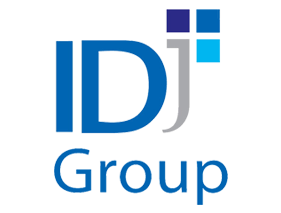Making a Feasibility Study Report
IDJ Group provides feasibility study reporting service with a team of professional experts – Contact: +84979852268 (Mobile/WhatsApp/Viber/Zalo).
Conducting a feasibility study will help you find out if your business idea has a good chance of success.
Your feasibility study should cover technical viability, market viability, and commercial viability. It should also include an overall assessment of risks and your strategies to minimize those risks.
How to conduct a Feasibility Study
Step One: Conduct a Preliminary Analysis
The primary purpose of the preliminary analysis is to screen project ideas before extensive time, effort, and money are invested. Two sets of activities are involved.
– Describe or outline as specifically as possible the planned product/service, target markets, and unique characteristics of the products/services by answering these questions:
- + Does the product/service serve a currently unserved need? (e.g., multicultural populations or age groups who are not currently being served)
- + Does the product/service serve an existing market in which demand exceeds supply?
- + Can the product/service successfully compete with existing product/service because of an “advantageous situation,” such as better design, price, location, or availability (e.g., balance assessment and rehabilitation, programmable devices)?
– Determine whether there are any insurmountable obstacles. A “yes” response to the following indicates that the idea has little chance for success:
- + Are capital requirements for entry or continuing operations unavailable or unaffordable?
- + Do any factors prevent effective marketing to any or all referral sources?
If the information gathered so far indicates that the idea has potential, then continue with a detailed feasibility study.
Step Two: Prepare an Anticipated Income Statement
Projected income must cover direct and indirect costs, taking into account the expected income growth curve. Working backward from the projected income, the revenue necessary to generate that income can be derived in order to build a projected income statement.
Factors that determine this statement are products/services provided, fees for products/services, the volume of products/services, and adjustments to revenues (e.g., actual reimbursement levels).
Step Three: Conduct a Market Survey
A good market survey is crucial. If the planner cannot perform this survey, an outside firm should be hired. The primary objective of a market survey is a realistic projection of revenues. The major steps include:
– Define the geographic influence on the market.
– Review population trends, demographic features, cultural factors, and purchasing power in the community.
– Analyze competing products/services in the market to determine their major strengths and weaknesses. Factors to consider include pricing, product lines, sources of referral, location, promotional activities, quality of service, consumer loyalty and satisfaction, and sales.
– Determine total volume in the market area and estimate the expected market share.
– Estimate market expansion opportunities (e.g., responsiveness to new/enhanced products/services).
Step Four: Plan Business Organization and Operations
At this point, the organization and operations of the business should be planned in sufficient depth to determine the technical feasibility and costs involved in the start-up, fixed investment, and operations. Extensive effort is necessary to develop detailed plans for:
– Equipment
– Selling methods
– Facility location and design (or layout)
– Availability and cost of personnel
– Supply availability (e.g., vendors, pricing schedules, exclusive or franchised products)
– Overhead (e.g., utilities, taxes, insurance)
Step Five: Prepare an Opening Day Balance Sheet
The Opening Day Balance Sheet should reflect the product/service’s assets and liabilities as accurately as possible at the time the product/service begins before the product/service generates income.
Prepare a list of assets required for the operations. The list should include item, source, cost, and available financing methods. Necessary assets include everything from cash necessary for working capital to buildings and land. Although the resulting list is rather simple, the amount of effort required may be extensive.
Liabilities to be incurred and the investment required by the product/service must also be clarified. These items need to be considered:
– Whether to lease or buy land, buildings, and equipment
– How to finance asset purchases
– How to finance accounts receivable
Step Six: Review and Analyze All Data
This review is crucial. The planner should determine if any data or analysis performed should change any of the preceding analyses. Basically, taking this step means “Step back and reflect one more time.”
Examine the Projected Income Statement again and compare with the list of desired assets and the Opening Day Balance Sheet. Given all expenses and liabilities, does the Income Statement reflect realistic expectations?
Analyze risk and contingencies. Consider the likelihood of significant changes in the current market that could alter projections.
Step Seven: Make “Go/No Go” Decision
All the preceding steps have been aimed at providing data and analysis for the “go/no go” decision. If the analysis indicates that the business should yield at least the desired minimum income and has growth potential, a “go” decision is appropriate. Anything less mandates a “no go” decision. Additional considerations include:
– Is there a commitment to make the necessary sacrifices in time, effort and money?
– Will the activity satisfy long-term aspirations?
IDJ Group is a reputable company in providing feasibility study reporting services with a complete set of products including:
– A feasibility study report (Vietnamese and English versions, soft copy, hard copy)
– A market survey (Vietnamese and English versions, soft copy, hard copy)
– In-depth consultation letter (in-depth advice on the feasibility study report, Vietnamese and English versions, soft copy)

Contact:
IDJ INTERNATIONAL REAL ESTATE, EDUCATION AND INVESTMENT CONNECTION (IDJ GROUP)
Head office: 5th floor, Charmvit building, 117 Tran Duy Hung, Cau Giay, Hanoi
Hotline: 0979852268
Email: contact@idjgroup.vn – Website: www.idj.com.vn
Tel: (+ 84-24) 3224 2925; Fax: (+ 84-24) 3224 2926





